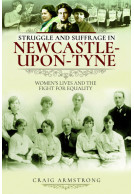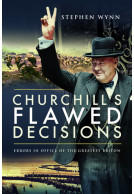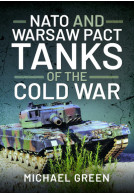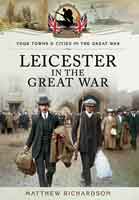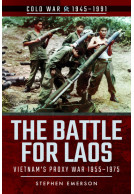The Boy Scouts in the Great War (Hardback)
Imprint: Pen & Sword Military
Pages: 208
Illustrations: 100 black and white illustrations
ISBN: 9781526723246
Published: 5th August 2021
(click here for international delivery rates)
Need a currency converter? Check XE.com for live rates
| Other formats available - Buy the Hardback and get the eBook for £1.99! | Price |
|---|---|
| The Boy Scouts in the Great War ePub (10.1 MB) Add to Basket | £6.99 |
The Boy Scouts Association was just seven years old when war broke out in 1914. With its members brought up with a strong ethos of duty and loyalty, it was no surprise that many wanted to play the best role possible in the nation’s war effort.
Many members were amongst those who rallied to the colours and enlisted in the heady days of the first weeks and months of the war. Some already belonged to either the Reserves or the Territorials and so found themselves immediately thrust into the front lines and casualty rates were high. Several of those who fought were decorated for their service, with a number even wining the Victoria Cross.
On the Home Front, Boy Scouts served as messengers, printers, dispatch riders etc. in the War Office and other government offices, both locally and nationally. Scouts helped gather in the harvest, hunted for spies, aided the civil and military authorities, maintained watch during air raids, helped various wartime charities and sold old bottles to raise funds for recreational huts and ambulances for the front. Others found themselves mounting guard on the coasts and on vulnerable points such as the railway network, or aiding recruitment efforts across the country. The Boy Scout became a trusted and common sight on the streets of the country and the contribution they made was great indeed.
As featured in
The Western Front Association
"This interesting book by Craig Armstrong delves into the world of the boy scouts and the contribution they made on the home front and in France delivering messages."
Casemate Magazine
Having heard a talk by my friend and scout leader during his village’s centenary commemorations, I thought I had a decent idea of the role that the Boy Scout movement had during the Great War. Boy was I wrong.
Western Front Association - Hampshire & Isle of Wight Branch
Craig Armstrong gives a comprehensive account of the multiple challenges the Boy Scout rose to during the Great War. This book has good clear structure that leads the reader through a logical arrangement of chapters. His writing style is easy to follow and appreciate whether you come from a Great War view point or a Scout movement one. There really is something for both the specialist or casual reader.
Highly recommended.
The stories of the individuals further ensures this book is a suitable reference and tribute to these men. As part of the military service section for 1916, a summary is given of the Berwick Boy Scouts and their Roll of Honour. Also, there is wider detail on how on first day of the Battle of the Somme, their wre several former Scouts who were among those who lost their lives. One of the former Berwick boys was Private G.S. Wilson, who served with the Royal Scots. He was killed during the intense fighting near Delville Wood, and is buried at Delville Wood Cemetery. Another, Sergeant Harry Cator who served with the East Surrey Regiment. He went out into no man's land and rescued thirty-six wounded men who were lying there. For this piece of bravery, he obtained the Military Medal. Furthermore, the book intertwines how at least twenty-one former Scouts were awarded the Victoria Cross during the war. One, Robert Cruickshank, who served with the London Scottish. In action at Salonika, Robert was wounded a couple of times moving up a slope delivering a message.
Jon Sandison
Overall, this is book will interest many, not least those who have an further interest in the history of youth movements in Britain.
"The book proved an interesting read."
Cross and Cockade
The book covers things like Scouts helping out in the community, or helping local communities out with jobs that are deemed not suitable for young adult men who are off to war when it could be done by a group of older teenagers. Towards the end of the war and the book, we learn more stories about various former Scouts who had joined up and did well serving that deserved recognition and praise. I’m going to say that most of the Home Front news and information I had heard of before having been in the Scouting moving for 30+ years. It was the war news and skills of former Scouts where I learnt new information. An interesting book, I think most will have heard of the Home Front news before as it gets well publicised, I think most will get satisfaction from the roles of former Scouts in serving in the war. A good book indeed.
UK Historian
Read the full review here
The book contains so much it really is a great resource and read. Well done Dr Armstrong.
For the Love of Books
Read the full review via Facebook
"Craig Armstrong gives a year by year account of their activities in 1914-1918...with over 50 black-and-white photographs throughout...a thorough account that highlights the exploits of ordinary Scouts living through extraordinary times."
Nina Hoole, Who Do You Think You Are Magazine
The book is well structured with chapters covering each year of the war sub-divided into Home Front and Military sections with many photographs, many of which are new to this reviewer. The scope of the effort of the Scouts is quite remarkable and the author does a good job in covering innumerable factors.
Martin Willoughby, Chairman of the Wessex Branch of the Western Front Association
This comprehensive history is to be welcomed and is a worthwhile addition to the shelves of those who have an interest in the Great War and social historiography of the time.
About Dr Craig Armstrong
Born and bred in Northumberland, Dr Craig Armstrong is an experienced historian,with a special interest in the history of the North East of England and Scotland. He works as a freelance author and has taught history at both Newcastle University and Northumbria University.











